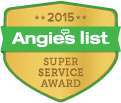Commercial Spotted Lanternfly Identification and Spraying Control Services
Commercial Spotted Lanternfly Identification and Spraying Control Services

The Spotted Lanternfly (SLF) (Lycorma delicatula) is a destructive invasive pest native to China and Eastern Asia that was first detected in eastern Pennsylvania. Since then, it has also been found in New York. Nymphs do the most damage and feed on several different host plants, including Grape Vines in the Vineyard around Long Island, Pine, and Fruit Trees, which poses a major threat to the Fruit, Wine, Logging, and even the Christmas Tree Industry.


What is Spotted Lanternfly?
The spotted lanternfly resembles a moth when it jumps or flies, but in reality, it is neither a fly nor a moth. It is a type of planthopper that belongs to the Order Hemiptera (cicadas, leafhoppers, and aphids). The adults prefer to feed primarily on the non-native host plant “tree of heaven” (Allianthus altissima) while the immature stages (or nymphs) will feed on a wide range of trees, fruits, and even grape vines.


Spotted Lanternfly egg masses (or clusters of eggs) are brown, seed-like in appearance, and about 1-inch long. They are covered in a mud-like secretion that helps them stay glued to a surface in a mass. After they hatch, the nymphs go through 4 growth phases, or instars. Immature nymphs are black with white spots, and they gain red markings at they mature through the 4th instar. Late stage nymphs are about ½-inch in length. Adult spotted lanternflies are 1-inch long, have brownish forewings with black spots and hindwings that are red with black spots.


What trees do they damage?
Spotted lanternflies will feed on a variety of host plants from May through November, and their feeding preferences change as they mature. Nymphs will feed on a wide-range of host plants while the adults target only a few species. There are over 65 known species of plants that the SLF will feed on, including ornamental trees (like lilac and dogwood), fruit trees, vines (like grapes), small fruits (such as blueberries), hops, and several vegetables.


Preferred plant species for SLF nymphs:
-
- Tree of heaven
- Willow
- Maple
- Poplar
- Prunus spp. (plums, cherries, peaches, nectarines, apricots)
- Apple
- Pine
- Grape vines
Preferred tree species for SLF adults:
-
- Tree of heaven
- Willow
The spotted lanternfly life-cycle
Understanding the spotted lanternfly’s life-cycle will help you successfully control and prevent problems. The eggs hatch in late spring. This is usually May, but it can also happen in late April. The nymphs then enter a repeat cycle of going up and down host trees as they go through their 4 instar stages. They will climb the trees to feed, get knocked off by wind or rain, and then climb the tree again. In mid-summer, around July, the nymphs will develop into adults. The adults will then mate, and the females will lay eggs in late summer through early fall. The next generation overwinters as eggs while the adults die in late fall.
What to look for?
From early fall to late spring check on and around host trees for the muddy-brown egg masses. From late spring to early fall watch for dark streaks of sap flowing down the bark of trees. (This is caused by the SLF piercing the bark of the tree to access the sap.) Infested trees may also have honeydew secretions at their bases which usually becomes covered in a black sooty mold over time. The exposed sap and honeydew can cause increased numbers of bees and wasps to hang around. The sure sign of an SLF problem is finding the adults congregating on Tree of Heaven in the fall.


There are 5 steps that need to be taken to help control and prevent the spread of the Spotted Lantern Fly
Stop the spread – If you live in or visit areas of the U.S. where SLF has been found, check any outdoor items for egg masses before moving them. This includes vehicles, firewood, outdoor furniture, picnic tables, boats, and children’s toys.
Remove the eggs – From late September through May, be on the lookout for egg masses. The egg masses can be scraped off surfaces using a knife or a thin plastic card. The egg masses should be sealed in a plastic bag or placed directly into hand sanitizer or alcohol to kill them before they are disposed of.
Control the nymphs – From late April through early November, tree banding using a product like Tree Tanglefoot® Insect Barrier, can be done to high risk host trees to capture the nymphs as the climb the trunk to feed. The tree bands should be routinely removed and replaced every 1 to 2 weeks through July. Nymphs can also be controlled by spraying them with.
Remove tree of heaven – From mid-summer through early-fall, cut down high-risk host plants for the adult SLF, like tree of heaven. To prevent the SLF from damaging other plants on your property, only remove about 90% of the host trees and use the remaining 10% as “trap trees” so you can control the adult SLFs.
Spraying Control of the Spotted Lanternfly – When the adults emerge from June-November control them with an insecticide application. Permethrin based spraying control is a very effective way to kill and destroy the adult Spotted Laternfly and their Eggs Masses.


Call Now for a free Tree and Shrub Evaluation:
Tom Cush
Commercial Manager
Nassau/Suffolk: 631-236-2152
NYC & 5 Boroughs: 917-708-8321
Email: tom@altearth.impideas.net
Also remember to report Any and All lanternfly sightings to all local authorities.










